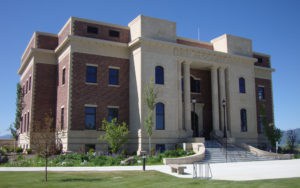 Alright, so we been hearing about it for months, and there are those of us that have been intimately involved in understanding the issue, and resolving it. For those of us that have not, a simplified understanding, below. ***Do not rely on this post for building eligibility matters, refer to Teton County Planning & Zoning for questions and/or accuracy, http://www.tetoncountyidaho.gov/department.php?deptID=18&menuID=1
Alright, so we been hearing about it for months, and there are those of us that have been intimately involved in understanding the issue, and resolving it. For those of us that have not, a simplified understanding, below. ***Do not rely on this post for building eligibility matters, refer to Teton County Planning & Zoning for questions and/or accuracy, http://www.tetoncountyidaho.gov/department.php?deptID=18&menuID=1
What’s the issue?
A number of building site owners – okay, let’s not call them building sites anymore… A number of lots, vacant land, acreage (whatever) have been declined a building permit within Teton County.
Why?
Now the fun part (it’s difficult to simplify here). Teton County has zones, areas that are restricted to various types of use. Each of these zones have regulations (rules) associated to protect the development and future development of the county, & cities within. Much of the County is comprised on A (agriculture) 2.5 and A20 zoned areas. According to Teton Valley Code: Title 8 of the Teton Valley code, The purpose of these areas is “to designate and provide opportunity for development of residential land use on marginal agricultural land” or “to control development on the most productive agricultural land in the county” HOWEVER just because development is allowed in these areas (and other zones) does not mean George can split 2.5 acres off the family farm and build his dream house. That is why we have Teton Valley Code: Title 9, subdivision regulations. In the instances where a building permit was not granted, the “site” was not split properly along the way – hence the term we keep hearing, “Illegal Lot Split”.
Give me an example!
Alright.
The greatest and most common example is what is called an Agricultural division” process the County had (and still has) available as a simple way to divide acreage. Agricultural exemption: A bona fide division or partition of agricultural land of agricultural purposes, which is the division of land into lots/parcels, all of which are twenty (20) acres or larger and maintained as agricultural lands. This exemption does not apply to a division for residential purposes. <— NOTE; residential purposes.
So, what’s the problem? Just follow the rules, and you have a buildable parcel, right?
Well, yeah. No. Here’s a few issues that came up:
1. A split or subdivision was applied with the County and the county accepted or “signed off” even though it did not meet underlying zoning requirements. In many of these instances the County argued that it was signed off by someone who may not have had authority to sign, and it did not meet the zone requirements. The consumer/developer argued “but the County signed off”.
2. Many people went through the process for a division (or those years before them) that did not allow a permit, yet the county provided a permit in many cases. Now that the problem exists on a higher level, the County had denied permits – not only to they neighbor with the same problem, but in some events the person who already had a home in place which meant no remodel, no addition, no new garage, etc.
How were these mistakes made?
There’s a few reasons for this, mostly (in my opinion) related to the evolution from a sleepy town of farmers to a growing resort destination. A good example of this is an amendment to the ordinance passed June 14th, 1999. Prior to this date, one could divide no less than 20 acres (through a relatively easy process with the county) and retain building rights. After June 14th, 1999, this could only be done on one occasion, called a “One Time Only Split of One Parcel of Land”. However, many kept on splitting like the good ‘ole days. No one caught on, and kept on splitting and building on. One of the big issues from the eyes of a Real Estate Professional or a Title Expert, in most cases there was no identifying information on a survey map, or more importantly a deed. Much of this information may not exist if an “agriculture only deed” was called… an agriculture deed (or some other form of identifier). If we have no indication something was split improperly 30 years ago, how do we know without an extensive search performed by the County for EVERY example that is outside a platted subdivision?
What’s the fix?
In light of all of this, the County took steps to create a resolution earlier this week (July ’16).
Simplified:
1. Those who went through the process and the County approved (even if it did not meet underlying zone requirements) will in most cases be approved regarTeton Valley News 7-14-16
2. Those who bought property with the expectation of building rights but later learned it was improperly split prior can, in almost every case, apply for the proper process, essentially reversing the prior split and moving forward as it should have been done from the get go. Remember, almost all of these cases are between June 14th 1999, and sometime in 2014 when the County started catching on to all of this. In addition, many of these parcels still have an availabe “One Time Only Split” that can be utilized to help remedy the situation.
You can read more about the problem in a recent amendment to Article 9, Chapter 11, Building Permit Eleigibility of Previously Created Parcels Also, see an article written by the Teton Valley News Article 7-14-16

Leave a Reply